J Class Yachts For Sale (Sail)
- Upcoming Events
- AMYA J CLASS History
- Stuff for Sale
- Construction Videos

Building a J Class Model
By john hanks iii.
Now you may be wondering what is involved in building a model of a J Class yacht. I will give you an idea of what is involved in getting your J model in the water.
To begin with, let me say that you will need to do some scratch building to get your J model completed, regardless which yacht you choose to model. The scratch building will involve the deck, the rig, and probably the hardware associated with the mast, boom and rigging. With that said, you will need to decide which yacht you would like to model. In the full size J Yachts there was a definite advantage associated with which hull was in the water, but with the models, it appears that any of the J designs will make a good fast sailing model, if it is built correctly. So your decision should be driven by your personal preference for a particular boat. Once you decide which yacht you would like to model you will need to either buy a fiberglass hull or get the drawings for your chosen hull. There are hull line drawings available in the proper scale for all of the J's as well as some deck plans. You can get line drawings from several of the maritime museums, such as the Mystic Seaport Museum.
The amount of time that you will spend on building your model will vary with your building ability, whether you start with a fiberglass hull and how much detail you want to put on your model. Should you decide to scratch build the entire model with a lot of detail, you should plan on spending about 500 to 550 hours building your model. If you begin with a fiberglass hull, subtract about 150 hours, if you do not want to detail your model, deduct about another 100 hours. The cost of materials will be about $800 to $900 if you decide to completely scratch build your model.
I will begin the actual building process with a plank-on-frame hull. You can skip these steps if you start with a fiberglass hull. The process for completing the remainder of the model will be the same from that point on.
To begin the building process, you will need to get your drawings ready by extending each frame to a “waterline” that is above the deck line on the drawing. This new “waterline” will be the part of the frame that rests on the building board. The new “waterline” gives you a flat plane so that all of the frames are referenced to the building board surface, while allowing the arc of the sheer at the deck line to maintain its shape. Your modified drawing should show the hull shape, the shape of the deck beams, and the building board surface.
You will begin the building process by building a building board. The easiest way that I have found to do this is to buy an 8 foot long 4”x6” and mount it at a convenient building height on 2”x4” legs. You will need to make sure that the 4”x6” plank is straight and true and that it will stay that way through out the building process, as this will determine the trueness of your model.
Mark a centerline on your building board and then mark all of the station locations on the centerline. You will then need to draw a line perpendicular to the centerline at each of the station locations. You will next attach small blocks (approximately 1-1/2 x 1-1/2 x ¾ inch) to the building board on the centerline and aligned with the perpendicular station lines. The blocks need to be placed so that the frames that will be glued to these blocks will be centered on the perpendiculars.
The next step will be to cut out the frames that will form the hull. For this step you will need to keep in mind the difference between the line drawings for a metal hull versus a wooden hull. The drawings for a metal hull show the frames to the outside of the plating and for a wooden hull, they are to the outside of the framing, not the hull planking. This will make a difference in your model, as all of the Js were metal boats, and if you draw your frames to the lines, your model will be oversized by the thickness of your planking.
I use 1/8 inch Luan plywood for the frames. The plywood comes in a 4’x8’ sheet and I can get all 28 to 30 frames from one sheet of plywood. The frame patterns are cut from your drawing, and each frame pattern is traced on the wood. With careful placement you should have no trouble getting all of the frames traced onto the plywood. You will need to draw the cutouts for the keel, inwales and king plank in the frame tracings. The centers of the framed are also cut out so that you end up with a ring of wood that is about ¾ inch from the outside to the inside of the frame.
When I cut my frames I do not try to cut on the line that I have drawn; I am not that good with the saw. I leave a little wood, about a 1/16 inch next to the line and sand the frame to the final shape. I find that this makes it much easier to control the accuracy of the frame shape. Once all of the frames are cut and notched for the keel and inwales, they are glued to the blocks on the building board. At this point you should be able to sight down the frames and get a good idea of the shape of your hull.
With the frames glued in place, you are now ready to install the keel and the inwales. I like to use ¼ inch birch plywood for the keel and 1/4x1/4 inch square for the inwales. The inwales can be cut from the same material that you will use for the planking. The hull framing is very limber at this point but it becomes very ridged once the keel and inwales are in place.
The hull is now ready for planking. I have used pine, bass, aspen, spruce and alder for planking. All work well. The availability and price of the material is what determines which material I use. When I built my first J some 30 years ago, clear pine in 8 foot lengths was plentiful and inexpensive. Since then, it has become hard to find and very expensive. As a result I have used other woods that were available, hence the bass, aspen, spruce and alder. The planking material is cut into strips that are about 5/32 inch thick and 3/8 inch wide. This is a nice working size, as the planks are limber enough to form to the hull without the need for spiling (tapering), wetting, or steaming them. You will start the planking at the first frame and end at the last. The 2 to 3 inches of hull that remain at the ends will be filled with solid wood blocks shaped to the dimensions of the hull. Begin planking your hull at the sheer and work to the keel. Each side of the hull will require about 50 to 60 planks. Remember that you will need to alternate sides of the hull as you plank so that you keep the stresses equal on both sides of the hull, thus preventing distortion in the hull.
You will need to change direction of the planking when you get to the bilge area of the hull. The planking will take on an increased twist towards the stern that will prevent the planks from laying fair. The planks will tell you when you have reached this point, usually about 15 to 20 planks up on the hull. To overcome this you will need to lay a plank in a straight line along the hull so that it lays flat between the areas where the existing planking meets the keel. This will leave a lens shaped gap of about 4 or 5 inches between this plank and the existing planking at the middle of the hull. Fill this area by planking from the new plank that you laid down to the existing planking. Once you have completed that step, then continue to plank the rest of the hull. When you have finished your planking, you are ready to attach the bow and stern blocks, shape them, and sand the entire hull to get it ready for fiber glassing.
I like to build the rudder next and fit it to the hull. I build the rudder as I would build an airplane control surface, with a leading edge spar, three ribs, and a trailing edge. The framework is then covered with 1/32 inch plywood. The square tube that accepts the 5/32 inch brass rod rudder shaft is installed in the leading edge as well as the pivot pin at the bottom of the rudder. The hull is drilled and the rudder log is installed and the rudder is fitted in place. Once the rudder is fitted and works well, the hull is fiber glassed using a single layer of 6 ounce cloth and three to four coats of resin. Each coat of resin is sanded before the next coat is applied. When the sanding is complete you will have a smooth and fair hull that will look great when it is painted. The hull is now ready to be removed form the building board. At this time, you should also have a stand built and ready to accept the hull.
Once the hull is off of the building board, it is time to seal the inside with epoxy and install the mechanical workings in the hull as well as install any reinforcements that are needed, such as at the chain plates, mast step, and sheet exits. From this point on, the building process is the same for the fiberglass hulls once you have the deck beams in place. This is also the time to lay out the hatch openings. When laying out the hatch openings you want to keep them as small as possible and still be able to do any work inside the hull that is necessary. Nothing is more frustrating than to find out that you cannot reach some part of your equipment once the deck is in place, so be sure that you can work on and remove and replace all of the fittings, winches, ballast, etc., through the hatch(s) that you have framed in your deck.
Building the deck is the next big step in getting your J ready to sail. There are several different ways to build your deck, and your decision on how much scale detail you want on your model will drive part of that process. If you want a slick deck with no scale detail, then a simple plywood deck will do. The 1/8 inch plywood will be more than adequate for the job and can be finished so that you have a very good looking wooden deck on your model.
Another option is to build a plank deck that represents the deck on the full size yacht. If this is your preference, then you begin by cutting the deck planking to the same dimensions as the hull planking. I cut my planks to a length of 15 inches so that I have scale 20 foot planks. To simulate the deck caulking, I use black construction paper glued between the planks. Once you have the planking cut, you will need to lay the king plank down the center of the deck and the water way planks down each side of the hull. All of the Js had the planking run parallel to the edge of the hull, so you will need to begin laying your deck from the edge of the hull, and work to the center. The paper between the planks helps the glue, thin CA, flow and form a good bond at the seam. From this point on you just continue your planking until the deck is completely covered. As you build your deck you will need to cut your planking at the hatches so you will have access to the inside of the hull when you have finished your planking.
When the deck planking is complete, you will sand the whole deck and get it ready for finishing. At this point, you should have a great looking model.
Again your decision on the amount of detail that you want on your model will determine your next step. If you opt for a scale appearance, by this time you will need to make the cabins, deckhouses, winches, cleats, and anything else that goes on the deck.
The hull is now ready for finishing. I use non-water-based, clear gloss, polyurethane on the deck, cabins, and spars and automotive acrylic enamel for the color on the hull. These make very nice durable finishes which should last many years on your model. I chose to use polyurethane because it does not yellow like varnish does as it ages. This is a personal choice driven by how you would like your deck to look as it ages.
At this point you will have to ballast your model. I have found that the easiest time to do this is after the model is painted and has the scale waterline in place. Place your model in a swimming pool or other suitable tank, and place the lead in the hull until the hull sits on the waterline that is painted on the hull. You will need about 60+ pounds of lead in a manageable form, about 5 pound pigs, for this exercise. Once the lead has been placed in the hull and the proper trim established, you will need to note where the lead is in the hull and the amount at each location. You can then remove the lead from the hull and using your notes, make molds for the ballast so that it fits into the hull cavities.
The next step is building your rig. The masts for the J models will be anywhere from 8 to 91/2 feet tall, depending on which boat you are building and how you lay out the sail plan. For support, the mast will need at least two sets of spreaders with accompanying side stays, and a diamond stay. I have used both aluminum and wood to make J masts. The last mast that I built was made from spruce and was 109 inches tall, with a tear drop cross section that measured about 1-1/4 x ¾ inches. The mast was tapered in its top 3 feet and had a bolt rope slot cut in it used to attach the main sail to the mast. The mast was made from two pieces of spruce that were glued together on the centerline with the grain in each piece set so that any warps canceled each other out. The result was a stiff spar that weighed about 1-1/2 pounds ready to step on the deck Extruded aluminum masts are also available in lengths up to 10 feet, from Ludwig Manufacturing. These masts have a bolt rope slot molded in them and are both light, about 1 pound for a 10 foot piece, and stiff.
The main boom and jib club were both made from spruce. The jib club was about 33 inches long and 1x1/2 inch in cross section and tapered to 1/2 x1/2 inch at both ends. The main boom was about 45 inches long and was about 1 inch from top to bottom with a scale cross section that resembled an old wine jug. These shapes were made for a model of Rainbow.
The gooseneck attachment was made for a piece of ¼ inch thick aluminum plate and secured in a slot cut into the base of the mast. The gooseneck and boom vang pivot on a single stainless-steel rod, (welding rod) about 3 inches long. The boom can be removed from the mast by simply pulling the pivot pin; then the gooseneck and vang are released. The sail can then be slid down out of the bolt-rope slot and rolled for storage.
This is a quick overview of the building process that is needed to build a model J boat.
Below is a list of most of the materials that were used.
2 – 1”x8”x8’ pine, aspen, bass or other suitable wood that can be cut into 5/32”x3/8” strips for hull and deck planking
1 – 4’x8’x18” plywood used for hull framing, 2 if you are using one for the deck
1 – 1’x4’x1/4” five ply birch plywood for the keel
1 – 1’x2’x1/32” plywood used for the rudder sheeting
1 – 1”x4”x8’ spruce for the mast and booms (optional if you are using an aluminum mast)
4 – ¼”x12”x.030” brass strap used for chain plates, mast, and boom fittings
1 – 1/8”x3’ stainless steel welding rod used for gooseneck pivot and spreader stubs in the mast
1 – 1’x6”x1/4” aluminum plate used for the gooseneck and vang fitting (use only if you are scratch building the fittings
1 – 5/32”x12” brass round tube used for spreader bases
1 – 3/16”x12” brass rod used for the rudder shaft
1 – 7/32”x12” brass round tube used for rudder log
1 – 3/16’x12’ square brass tube used for the rudder shaft socket in the rudder
60+ pounds of lead used for ballast
4 – 8oz bottles of thin CA used for planking the hull and deck as well as general construction
1 – 2oz bottle of medium CA for general construction
32oz of 30 minute or longer set epoxy used to seal the hull interior
1 – 10’x50” 6 oz fiberglass cloth used to cover the outside of the hull
2 – Quart cans of polyester resin with catalyst used with the fiberglass cloth
6 to 8 – 2” disposable brushes used to apply polyester resin
8 – Turnbuckles used for the side stays, boom vang and diamond stay
36 – 1-72x 1” stainless steel machine screws with nuts and washers used for various attachments
90’ – 60 pound test nylon coated stainless steel fishing leader with swages used for the standing rigging
8 – Single blocks used for back stay, winch arm, up haul and rudder control
1 – Spool of 40 to 60 pound test braided Dacron line for the sheets
12 – Bowsies for various rigging adjustments
Reference Information
Reference book: Enterprise to Endeavour by Ian Dear, ISBN 1-57409-091-7
This covers most of what you would need to build your J model. I did not mention the wood or brass that I used to make the scale detail, as most of it was obtained as scrap from a cabinet shop and salvage yard. Some additional things that you will need are a radio (at least 2 channels), a quarter scale servo for the rudder, and a sail winch, either arm or drum with about 3,000 inch ounces of pulling power. You would also need to order your sails from your favorite sail maker.
I hope that this answers most of your questions about what it takes to build a model of a J Class yacht. By the way the process described above applies to scratch building any R/C model sail boat, the only difference is the scale of the project. Good luck with your building project

AMYA J CLASS
1330 North Andrew Drive, Kuna, Idaho 83634, United States
Copyright © 2022 AMYA J CLASS - All Rights Reserved.
Important Registration Information - 2024 Registration
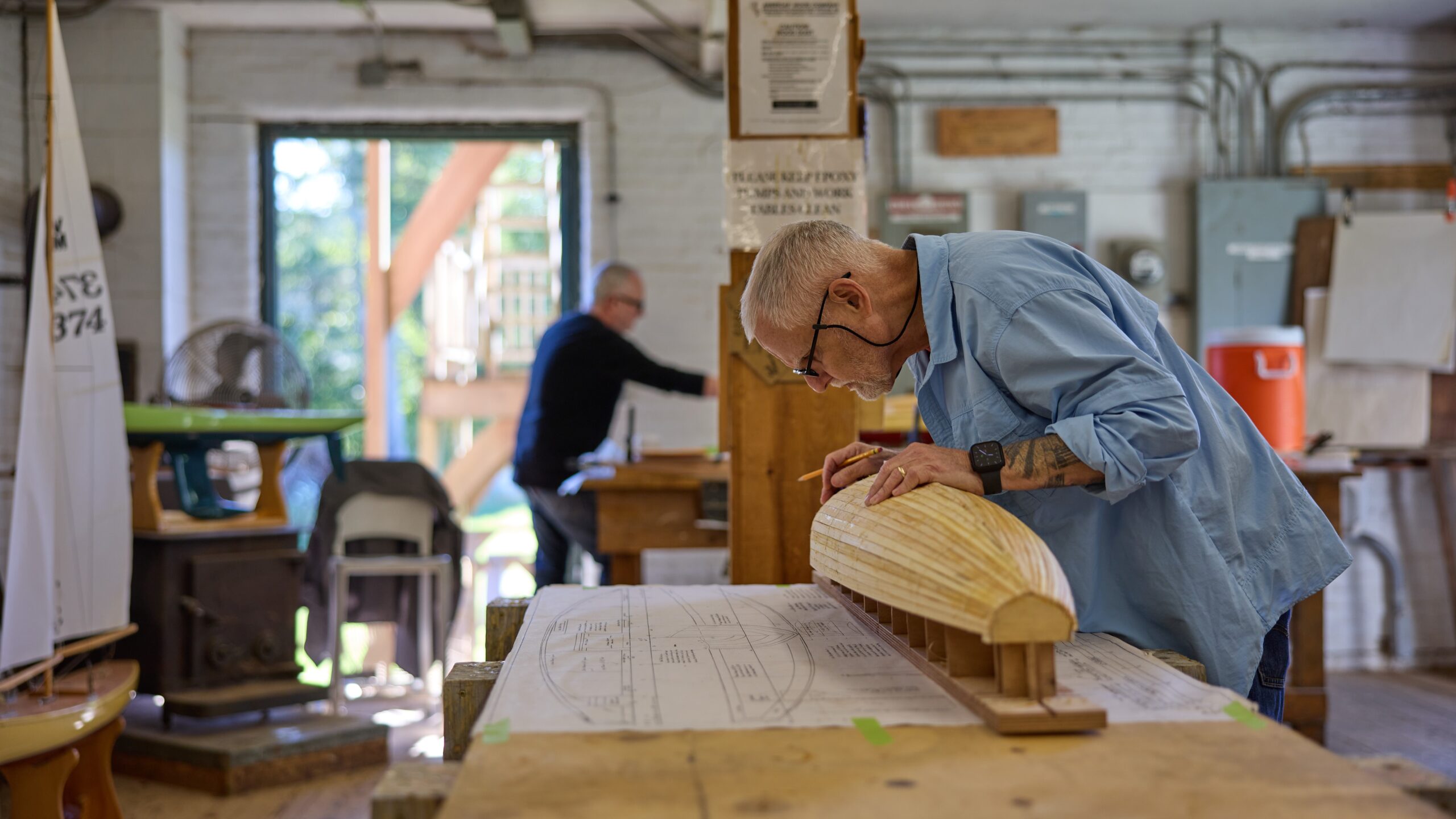
Build Your Own Plank Constructed Pond Yacht
A vintage marblehead-class pond yacht designed for radio control..
While growing up in western Pennsylvania, Bruce Richter spent countless hours in his dad’s workshop learning the ropes, building models, and making sawdust before getting sidetracked with garage bands, sports, and college. The urge to build returned around the time he and his wife Jan moved to New York City, although he quickly realized apartment living wasn’t exactly conducive to woodworking. The planets aligned when he discovered WoodenBoat School and Kerbs Boathouse in Central Park, home to over one hundred radio-control sailboats. Since then, Bruce took WoodenBoat School’s pond yacht construction course six times and served as former instructor Thom McLaughlin’s assistant before taking over as lead instructor a few years ago. Bruce has earned several national craftsmanship awards for the Vintage Marblehead RC sailboats he built at WBS. He is former Commodore of the 100-plus-year-old Central Park Model Yacht Club, has served as Class Coordinator of the US VMYG Vintage Marblehead fleet, is designer/art director of the vintage group’s publication The Model Yacht, and occasionally builds guitars. Following a career as a writer/creative director in major New York City advertising agencies and as president/executive creative director of his own marketing services firm, Bruce and wife Jan are beginning their next chapter in life as Blue Hill, Maine transplants.
This course is appropriate for students with some knowledge and experience. Basic knowledge and use of hand tools is required for most shop courses. Basic knowledge and ability to sail is required for most waterfront courses.
This course involves a low level of activity throughout the week including: occasional standing and working, seating is usually available, working on your own project at your own pace is common.
This is a six-day course ending Saturday
Other Sessions: September 1-7
Pond Yacht I: $385 (Includes CNC cut molds, strongback, keelson, planking, fin, and rudder.) Pond Yacht II: $169 (Includes materials to finish the boat other than sails, fittings and electronics.) Pond Yacht III: $35 (Shop supplies to help you continue your project.)
In this course each student will begin the construction of his/her own pond sailboat using the plank on frame process. This practice is similar to those used in building full-sized boats and allows for a flowing hull form that is beautiful on display and swift on the water. The course boat NORUMBEGA was designed by former instructor Thom McLaughlin. The class of this boat is known as Vintage Marblehead (VM) and is still actively sailed today under the guidance of the U.S. Vintage Model Yacht Group. The Marblehead class of small boat originated in 1932 using minimal design requirements of 50″ LOA and 800 square inches of sail. When fully rigged the boat is over 7′ tall, which makes it quite impressive from shore. The boat can be easily dismantled for transport. Construction of this pond yacht will pleasantly challenge and inform the builder. While group and one-on-one instruction will take place daily, students will also make decisions based on blueprints and developing an eye for form. During this week, the boat will be planked, faired, and the fin and rudder will be fabricated. Bruce will also discuss the steps that follow to complete the boat—decking, rigging, electronic installation, and painting.
Students who have started construction of their VM model in previous years at WoodenBoat School are also welcome to participate in this course to finish their boat. This week will be an excellent opportunity for further guidance. It will also provide inspiration to those individuals just beginning their boat and to view firsthand the final steps in construction.
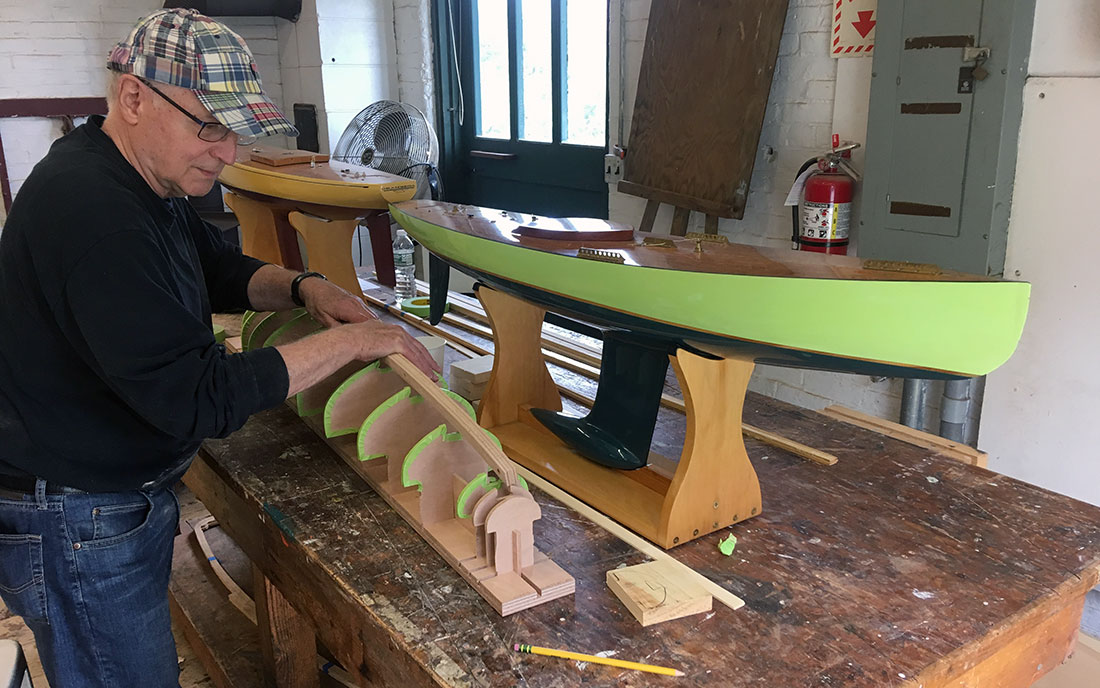
This course is appropriate for students with some knowledge and experience. Basic knowledge and use of hand tools is required for most shop courses.
“Bruce Richter was an excellent instructor. He taught the pond yacht course in a knowledgeable, caring, and professional manner.”
T.S., Wilbraham, Massachusetts
“Bruce Richter taught a great course. I liked that he checked our work each evening and made note of our mistakes to correct the next day. He pulled together regular meetings to discuss theory. I especially enjoyed the pond yacht history lesson! Great teaching skills. Great personality and a sense of humor.”
J.J., Phoenix, Maryland

Register For This Course
Courses fill quickly, so don't delay if this is a course you want to take.
Related Courses
Woodcarving, carving name boards, introduction to woodworking.
CPM Model Sailboats
J class rc sailboats, header content region, insert text, image or banner ads here, or just delete this text and leave this area blank.
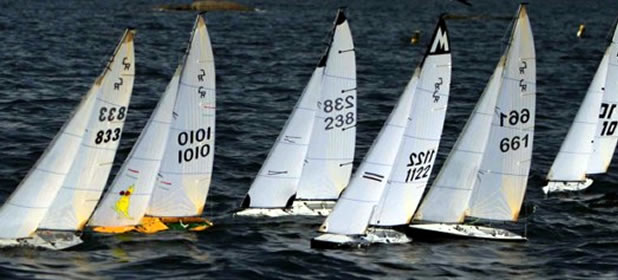
1/25 (36") Scale America's Cup high performance model sailboat
5ft Replica of the 1962 Americas Cup 12 Meter
45" Scale Model of the Olympic Star Boat
J Class Boat-Shamrock V
1/16 (8'-10')Scale Replica of the 1930's America's Cup Class Yacht
RMG Sail Winches
High Performance sail control winches

- Create as many news links as you need. News links are simple bullet lists.
This is where you would add your text, images, or advertising banner
2023 J Boat Down the River Race Aug 25th Info CPM is now producing the Shamrock V Original Plug and mold by Dave Brawner and Ranger mold and plug by Gary Mueler
Shamrock V and Range Fiberglass hulls, Rudders, Mast fittings.
Current prices for the Shamrock V are as follows Hull - $625.00 Rudder w/Shoe - $175.00 Ballast (3 Piece) - $200.00
Current prices for the Ranger are as follows
Hull - $700.00 Rudder w/Shoe - $175.00
SHAMROCK V BUILD SITE
Fully Built Ready to sail Shamrock V J boat cost estimate.
Shipping is additional
Are you interested in building a J Boat?
Take a look the Shamrock V Build Web site for all aspects of building a J Boat
SHAMROCK V BUILD SITE
Build queue Deposit Policy
To be placed into the CPM Build Queue a min deposit of $100 is required. Due to the custom nature of building fiberglass hulls and components this deposit is NON refundable.
J Boat Video's
J BOAT Photos and Construction
2011 J-Boat National Championships - Mystic, CT
CPM's David Ramos 2013 J-Boat National Champion sailing the Shamrock V
CPM's David Ramos 2014 J-Boat National Champion sailing the Shamrock V
CPM's David Ramos 2016 J-Boat National Champion sailing the Shamrock V
CPM's David Ramos 2018 J-Boat National Champion sailing the Shamrock V
CPM's David Ramos 2020 J-Boat National Champion sailing the Shamrock V
CPM's David Ramos 2022 J-Boat National Champion sailing the Shamrock V

Copyright © 2021. Chesapeake Performance Models LLC. All Rights Reserved..
- THE £100 CUP
- THE 1ST CHALLENGE
- THE 2ND CHALLENGE
- THE 3RD CHALLENGE
- COUNTESS OF DUFFERIN
- THE 4TH CHALLENGE
- THE 5TH CHALLENGE
- THE 6TH CHALLENGE
- THE 7TH CHALLENGE
- THE 8TH CHALLENGE
- VALKYRIE II
- THE 9TH CHALLENGE
- VALKYRIE III
- THE 10TH CHALLENGE
- THE 11TH CHALLENGE
- SHAMROCK II
- CONSTITUTION
- INDEPENDENCE
- THE 12TH CHALLENGE
- SHAMROCK III
- THE 13TH CHALLENGE
- SHAMROCK IV
- SHAMROCK 23M
- THE 14TH CHALLENGE
- THE 15TH CHALLENGE
- THE 16TH CHALLENGE
- ENDEAVOUR II

PLANS & MODELS OF ENDEAVOUR
Yves GARY Hits: 31537
Category: ENDEAVOUR

Contact Details
J Class Hulls
J Class radio controlled model yachts
Hello fellow enthusiast. My name is Alan and welcome to my new, updated website.
Those of you who have visited this site before will have observed that nothing much has changed for a number of years and even I have started to feel a bit guilty about my digital inertia. I make no apologies as I assume that you will appreciate that when faced with the option of spending a day in the workshop or spending the day in front of a computer screen, the workshop wins every time. The guilt has now got the better of me and hence this new site.
As a hobby I initially set out to develop and create a kit of parts for the Canterbury J and similar Nottingham J which will enable both the novice model builder, and the experienced builder alike, to create an attractive model with good sailing manners which is also competitive and fun to race. This package, and especially the Nottingham version, has proved popular both for racing and also social sailing but since then I have developed the Nottingham 48 model further and also added the Nottingham 60 to the model range.
I've also made some changes to the kit to reflect how I now make the models for myself. I can't call these "improvements" as the behaviour of the model on the water is unchanged but I think they improve the aesthetic look of the model. They also involve a bit more "modelling" which maybe be something you are looking for...or maybe not! The model can still be built in the original way for those looking for a simpler and quicker completion of their model.
The king plank and outer plank have deeper etching allowing the model builder to use a contrasting stain along the outer plank and king plank. I now also cut the shorter channel for the jib attachment point into the deck for a flush finish and use a different mast ram but the longer channel is likely to offer the racing skipper more tuning possibilities.
The loose sheeting to both the jib and the mainsail is below the deck and the mainsail sheet uses a post between the hatches. The hatches include a bit more detail and I also offer a "lifty" to aid launch and retrieval at the lake. This fits on the deck but is secured to the ballast to avoid stressing the deck when used.
Also on this site is the new International Dragon, a logical extension to the model range and a development of the 60-inch hull. This model contains a number of innovations to model yachting and is designed from outset to carry a Genoa rig.
I've also included on the site (it's becoming more of a "blog" than a web site!) some of the J Class projects I'm working on or will be working on in the future.
The side bar to the left will navigate you to the various sections of the site and clicking on the arrows will open new pages with more detail. There is information on all the models and the various rigs together with the build manuals, racing rules (Canterbury) and a host of additional information designed primarily to help you arrive at the conclusion that your life is incomplete without a model J Class yacht…!!
Feel free to contact me on [email protected] if you have any questions. You can also phone on 07969 538626 but I'm often out of the country and calling can be expensive.
- 1-772-287-7022
- 8AM - 6PM East Coast Time
- [email protected]
GIANT VINTAGE POND YACHT HULL – CUSTOM STAND – MAGNIFICENT
Presented is a beautifully built pond yacht hull made using traditional plank on frame construction important information added in italics . It is so finely made and built like a real sailing craft that it must have been built by a master shipbuilder. The hull is made by nailing a series of planks called “strakes” on a frame of sawn ribs that are mounted crosswise on the keelson with beams across at deck level. The ribs are placed at three inch centers. At the very bow is a screw standing 1/8 inch above the deck level, and 6 inches behind it is a metal strap. These markers can be seen in a number of the photographs. Taken together, both these items were likely used to hold a bowsprit in place. The hull is shaped in accordance with the plans which give the desired profile shape. The inside shows dried old paint and some accumulation of grit and grime again adding to look of a many years old derelict. Due to this model’s age, many of the joints between the strakes have dried out and leave a small gap between the adjoining planks adding to a look of a boat yard derelict. The streamlined shape of the hull originally made us think of a “J Class” racing yacht, but the addition of fittings for a bowsprit puts it in an entirely different category. The Universal Rule to which the J Class was designed was adopted in 1920. The class was selected for America’s Cup racing in 1928. But a bowsprit installed on the model easily dates it back into the mid to last half of the 19th Century. Consequently, the model likely replicates any of the international large size racing yachts prior to 1900. This would include any of the yachts in the America’s Cup 1893-1903 Class, known as the great 90-footers, and could include some earlier ones that had a single mast. The vessels in this class with a 90 foot waterline length were: Pictured is COLUMBIA of 1899. 1893 VIGILANT vs. VALKYRIE II 1895 DEFENDER vs. VALKYRIE III 1899 COLUMBIA vs. SHAMROCK 1901 COLUMBIA vs. SHAMROCK II
The rigging and much of the deck has been removed but the original rudder and the lead keel are in place. What you see is an advance state of aging. All the gear that was removed was lost, and there is nothing more than what you see in the pictures. DIMENSIONS: HULL Length Overall without bowsprit: 50 1/2″ L x 10″ W x 14 /8″ H to deck WEIGHT: 15 lbs STAND: 33 1/4″ L x 9 1/2″ W x 1 1/2″ H 5 lbs
Buy as a work of art, it is truly a masterpiece, and makes a beautiful display.
CONDITION: As with all hand made models, particularly very old pond yachts that were sailed, expect imperfections. This one has the blunted bow that is typical of a model that has sailed into something and also has an age crack on the starboard side amidships. The rudder and the lead keel are present which is not commonly found with models of this genre. The hull finish has been abraded with bear wood showing in places. In our view, this adds to the model’s charm. The end result is this is a fine, high quality model of which anyone will be proud to display.

About Land and Sea Collection™
The Source for the Finest Nautical Antiques, Affordable Marine Art, Vintage Dive Helmets, New Sextants, Antique Sextants, and beautifully executed Antique & Vintage Boat, Ship and Aircraft Models.
Contact Information
By Appointment Only Palm City, FL 34990 USA
- +1-772-287-7022
- 8am-6pm EST
Join Our Mailing List
Email (required) *
First Name *
Last Name *
Example: Yes, I would like to receive emails from Land and Sea Collection. (You can unsubscribe anytime)
©Copyright 2003-2022 by Land And Sea Collection™, All Rights Reserved. | Website by: Mary Lee Weir
Yachting World
- Digital Edition

A pocket guide to the J Class yachts – the world’s most elegant racing fleet
- Toby Hodges
- March 19, 2017
Toby Hodges profiles the world's most beautiful fleet of classic racing yachts – the J Class
Shamrock V – JK3

J Class yacht Shamrock sailplan
LOA: 36.50m /119ft 9in · LWL: 26.7m/87ft 7in · Beam: 6.00m/19ft 8in · Disp: 166 tonnes
Original lines: Charles E Nicholson
Modified design: Dykstra Naval Architects
Launch year and yard: 1930, Camper & Nicholsons
Identifying features: The only wooden J and the smallest. Dark green hull with bronze deck fittings.
Current state: She has just had a refit in Palma after a long period under her past owner chartering, cruising and occasional racing.
Race prediction:Her smaller size means she will struggle against the other J Class yachts in real time – but she has the most experienced skipper and her recent mods are all aimed at making her competitive on handicap.
Skipper: Simon Lacey · Race Helmsman: Mike ‘Moose’ Sanderson

Photo: J Class Association / Gerhard Standop
Velsheda – JK7

J Class yacht Velsheda sailplan
LOA: 39.25m/128ft 9in · LWL: 27.8m/91ft 3in · Beam: 6.57m/21ft 7in · Disp: 180 tonnes
Launch year and yard: 1933, Camper & Nicholsons. Rebuilt by Southampton Yacht Services in 1997.
Identifying features: Dark blue hull, pinched transom and that iconic sharp J bow.
Current state: Continually optimised and very well prepared.
Race prediction: Highly experienced, well-gelled crew and a yacht that is looking particularly nimble and aggressive at the start. Despite surrendering size to the modern J Class yachts she’s a firm favourite to win any regatta.
Skipper: Barney Henshaw-Depledge · Race helmsman: Owner-driver
Helen Fretter goes racing on board J Class yacht Velsheda

Photo: J Class Association / Onne van der Wal
Endeavour – JK4

J Class yacht Endeavour sailplan
LOA: 39.31m/128ft 12in · LWL: 27.30m/89ft 7in · Beam: 6.68m/21ft 11in · Disp: 175 tonnes
Launch year and yard: 1934, Camper & Nicholson. Relaunched by Royal Huisman in 1989.
Identifying features: Royal ‘Endeavour Blue’ hull, clean deck, single deckhouse.
Current state: Completely refitted by Yachting Developments in 2010-11. Based between Palma and Cascais she is for sale through Edmiston and in prize condition.
Race prediction: Fully optimised and race ready, but is up for sale and now already unlikely to be ready in time for Bermuda.
Skipper: Luke Bines · Race helmsman: N/A (Torben Grael in 2012)
Video exclusive: what it’s like to sail the iconic J Class Endeavour

Photo: J Class Association / Jens Fischer
Ranger – J5

J Class yacht Ranger sailplan
LOA: 41.63m/136ft 7in · LWL: 28.80m/94ft 6in · Beam: 6.41m/21ft 0in · Disp: 203 tonnes
Original design: Starling Burgess and Olin Stephens
Modified design: Studio Scanu, Reichel Pugh, Fred Elliot and Dykstra Naval Architects
Launch year and yard: 2003, Danish Yacht
Identifying features: White hull with snub nose and spoon bow.
Current state: Refitted and optimised at Newport Shipyard 2016, where chainplates were moved forward and tracks modified to take a bigger headsail.
Race prediction: The heaviest J, but a rocket in flat water, such as in Bermuda’s Great Sound. A veteran crew whose consistency is Ranger’s trump card.
Skipper: Dan Jackson · Race helmsman: Erle Williams
Ranger J5 – the first completely new J Class yacht

Ranger , J5 RYS centenary 2015. Photo Paul Wyeth
Rainbow – JH2

J Class yacht Rainbow sailplan
LOA: 39.89m/130ft 11in · LWL: 26.90m/88ft 3in · Beam: 6.42m/21ft 1in · Disp: 167 tonnes
Original lines: William Starling Burgess
Launch year and yard: 2012, Holland Jachtbouw
Identifying features: Black hull, red bottom and modern grey rig with race boom.
Current state: Sold in 2015 by Chris Gongriep, the former owner of Holland Jachtbouw, she has since solely been used for cruising by her US owner who shows no signs of wanting to race, although she will be in Bermuda to watch.
Race prediction: Was cruised and raced extensively for a couple of seasons after she was built and has proven to be a supremely fast boat for her size in the right hands.
J Class yacht Rainbow – the Dutch destroyer
Hanuman – JK6

J Class yacht Hanuman sailplan
LOA: 42.19m/138ft 5in · LWL: 27.50m/90ft 3in · Beam: 6.60m/21ft 8in · Disp: 180 tonnes
Launch year and yard: 2009 Royal Huisman
Identifying features: Carries the old Endeavour II sail number JK6 – but a totally modern day reinterpretation of Sopwith’s second boat, built in aluminium.
Current state: Her weight and stability were optimised at Newport Shipyard in 2016 and she was also fitted with a new mast and rigging, plus a new furling headstay.
Race prediction: With her same core Comanche/Puma crew and Ken Read on the wheel, this is a highly race-oriented J Class yacht.
Skipper: Greg Sloat · Race helmsman: Ken Read
Inside J class yacht Hanuman

Lionheart JH1

J Class yacht Lionheart sailplan
LOA: 43.4m/142ft 5in · LWL 27.2m/89ft 3in · Beam: 6.55m/21ft 6in · Disp: 180 tonnes
Original lines: Starling Burgess and Olin Stephens
Modified design: Hoek Design
Launch year and yard: 2010, Bloemsma and Claasen Jachtbouw
Identifying features: Black hull and rig, bulwarks giving a high freeboard effect, two deckhouses.
Current state: Constantly upgraded, Lionheart has new North raw sails with plans to build more sails before Bermuda.
Race prediction: Lionheart is consistently optimised, has some key pros and a fantastic crew spirit. Should be finishing in the top three in Bermuda.
Skipper: Toby Brand · Race helmsman: Owner-driver · Tactics: Bouwe Bekking
J Class yacht Lionheart J/H1 – replica of an original that was never built

Photo: J Class Association / Thierry Martinez

J Class yacht Topaz sailplan
LOA: 42.7m/140ft 1in · LWL: 27.8m/91ft 3in · Beam: 6.75m/22ft 2in · Disp: 180 tonnes
Original lines: Frank Paine
Launch year and yard: 2015, Holland Jachtbouw
Identifying features: Longest waterline of all the Js (for which there is a sail area penalty) she has a striking Art Deco interior and a dark blue hull with turquoise antifoul.
Current state: New and raring to go.
Race prediction: With her fuller volume forward, longer waterline and shorter keel, Hoek believes she will be the fastest J Class downwind and in light airs. The crew has practised hard since last year and now has top big boat helm in Holmberg.
Skipper: Romke Lopik · Race helmsman: Peter Holmberg
New J Class yacht named Topaz is launched – and the design team says she is “absolutely stunning”

Photo: J Class Association / Carlo Borlenghi

J Class yacht Svea sailplan
LOA: 43.6m/143ft 1in · LWL: 27.6m/90ft 7in · Beam: 6.65m/21ft 10in · Disp: 180 tonnes
Original lines: Tore Holm
Launch year and yard: 2017, Bloemsma / Vitters
Identifying features: Dark grey metallic hull, near flush ultra-clean, ergonomically optimised deck with low single doghouse and huge 8ft diameter wheel that turns in a well that extends down to the keel frames.
Current state: Just launched.
Race prediction: Tore Holm was a gifted Metre designer and Svea looks like a fast upwind boat, with a race oriented deck design and a slippery underwater shape. It’s asking a lot of her crew to be competitive for 2017.
Skipper: Paul ‘PK’ Kelly
Race helmsman: Owner driver
Nine Js and counting: J Class Svea J-S1 is sold and under construction at Vitters
The history of the J-Class
The Js are inextricably linked with the America’s Cup as, barring Velsheda , all were built for the purpose of America’s Cup racing. From 1929 to 1937, 20 J Class yachts were designed. Ten of these went on to be built, with six racing in the America’s Cup finals. A modern J Class yacht’s lines can only be taken from the original designs, ensuring the fleet’s look endures.

J Class yacht J9 ready to build
J Class yacht J9 ready to build – and may be “the fastest and finest yet”
Plans for the unbuilt J9, from a Frank Paine design of 1936, have been developed by Hoek Design and the project is ready to go straight into construction.
As the J Class gears up for a showcase regatta that will form part of the 35th America’s Cup in Bermuda in 2017, the fleet is growing. The J Class J8, from an unbuilt 1935 Frank Paine design reimagined by Hoek Design, will launch in the Netherlands next month, and a Swedish design, J11, is being developed.
In addition to these boats from (as the rules stipulate) original designs, J9 is ready to go straight into construction at Holland Jachtbouw. Andre Hoek, whose company Hoek Design has carried out exhaustive tests on all the super-Js, believes J9 could be the fastest and finest yet.
Ten Js were originally built between 1930 and 1937, while a number of other striking designs were drawn but never saw the light of day. The new J9 project is one of these. The original hull lines were drawn in 1936 by Frank Paine, the designer of Yankee. The design was commissioned by Gerhard Lambert, who owned Yankee and the three-mast schooner Atlantic.
“The yacht we now call J9 was never built as Lambert did not win the right to defend the America’s Cup in 1937,” explains Andre Hoek. “But Paine’s template for a super-J with the maximum allowable waterline length impressed back then and still does so today.
“The term ‘super J’ was used with good reason. During the early 1930s the waterline of the Js grew from around 80 feet in 1930 to 83ft in 1934 and 87ft by 1936. The latter were significantly faster and dubbed the super-Js because of their increased size. As Ranger and Endeavour II – which competed for the last America’s Cup race in 1937 – were both 87ft, the romantics among us can be forgiven for seeing another reason for calling them super!”
“Frank Paine designed her with a waterline length of 88ft as he was convinced that the extra foot in length would more than make up for the penalty on sail area she would have incurred,” says Andre Hoek with the air of someone who has spent a great deal of time studying his subject.
“The design also featured a fascinating hull shape with a new underwater body in the foreship. When she is finally launched, I am certain that this hull shape development will enable J9 to perform extremely well both upwind and downwind in light and heavy airs.”
Like the other three Js optimised by Hoek Design, the 21st-century version of J9 has been designed on the basis of continuous longitudinal framing in order to reduce longitudinal deflection and to reduce the head stay sag. She has been extensively optimised under the new J-class handicap system and extensive studies have been completed into key factors such as the displacement-length ratio, stability, mast position and sail area.
All the Hoek designs – whether eventually built in the 1930s or not – have been analysed with an in-house velocity prediction program. Purpose-made for these hull shapes, the VPP was calibrated on the basis of tank tests carried out at the Marin institute and the aero-dynamics were tuned using wind tunnel data.
The best performing Js in this initial research were then further analysed using Numeca’s Computational Fluid Dynamics (CFD) software. The first to be built was Lionheart, JH1, which was redesigned and reconfigured by Hoek Design. Launched by Claassen Jachtbouw in 2010, she has been very successful on the race course, winning three of the four major regattas in 2014 by significant margins.
The America’s Cup organisers are to set a series of races in Bermuda in 2017, followed by a match race between the two best yachts in the regatta.
Read more at http://www.yachtingworld.com/news/j-class-yacht-j9-is-ready-to-build-and-may-be-the-fastest-and-finest-yet-64764#ITdkMOyHxQ3wV1wP.99
www.abmys.eu
Leave a Comment Cancel Reply
Your email address will not be published. Required fields are marked *
Save my name, email, and website in this browser for the next time I comment.
Sign me up for the newsletter
{{#message}}{{{message}}}{{/message}}{{^message}}Your submission failed. The server responded with {{status_text}} (code {{status_code}}). Please contact the developer of this form processor to improve this message. Learn more {{/message}}
{{#message}}{{{message}}}{{/message}}{{^message}}It appears your submission was successful. Even though the server responded OK, it is possible the submission was not processed. Please contact the developer of this form processor to improve this message. Learn more {{/message}}
Submitting…
Uso de cookies
Este sitio web utiliza cookies para que usted tenga la mejor experiencia de usuario. Si continúa navegando está dando su consentimiento para la aceptación de las mencionadas cookies y la aceptación de nuestra política de cookies , pinche el enlace para mayor información. plugin cookies
Classic Pond Yachts
If you are looking at this on your phone, it is more mixed up that it used to be, I am doing my best but WIX have changed the way it works, IT IS NOT BETTER!! sorry.
It has taken a while, but the deck is back on Cymbeline, looks good.

Go to the bottom of the Cymbeline page to see work done.
Stan Witty WASP
I have got my Stan Witty Wasp sailing. She is my first Marblehead Vane steered boat, that I have actually raced, now called WaZp. I originally bought her to do the Vintage open event at Fleetwood, as I did not want to risk damaging my Kittywake on the bank, more info on the bottom of the Stan Witty Wasp page. She sailed really well, but we, the Skipper and Mate, took a while longer to get going, she now needs a repaint! Our first sail was a VMYG meeting at Gosport, pictures below of Gosport and Fleetwood, with a link to the page.
Just found this Video!!
https://youtu.be/KSy9qn7kYww

WaZp at the vintage day in Gosport, I took a few boats that day, nice light winds and sunshine with friends, a lovely day.

'Wazp' sailing at Fleetwood in the Classic and Vintage Marblehead Regatta 21 & 22 May. A great weekend, as I put these words together a couple of weeks later, I can almost walk again, they made us walk over 13 km on Saturday alone. As mentioned above 'WaZp' sailed very well, hindered by us learning how to set her up, our first Vane meeting, we are really Radio guys, but we will be back next year, a great experience, a few more words on the Stan Witty Wasp page.

Gosport VMYG day, I took Wazp my Stan Witty Marblehead, Laura my 5 Tonner, XPDNC and a couple of Toy models for the grandsons, a lovely day.

As always with VMYG meetings a lot of fascinating boats and interesting people.

A model Ship was spotted and recovered from the bottom of the lake, looks like she was set fire to and sunk! but a welcome new model for a young lads bedroom, now called the 'Titanic', his mum will be so pleased!!
5 Tonner Laura sailing at the VMYG day on the lake at Gosport M.Y.C. Keen grandsons on turning pole duty! Spot the Bowman sailing by.

XPDNC sailing on the River Hamble.

More work being done on Plane Jane our 36r. My son getting her ready for paint, pictures to follow on Plane Jane page.

Flair on a new page, she is a John Lewis 6 Meter designed in 1989.

Classic Pond Yachts
Frank Russell Design
R/c and model yacht design, plans, boats, sails..
I have been a designer of model and radio yachts since 1968. Boats been built from my plans now number in the hundreds both from both home and production builders. Many of my designs have won State and National Championships in Australia and overseas. New designs are added periodically and occasionally I do receive requests for specific designs. I also from time to time produce free plans.
Most of my older plans Pre 2000 will eventually be available as PDF files of the original large format drawing. The plans are located here:
A more complete list of my designs is here:
Plans are normally drawn on A4 and A3 format. Sections and appendages are normally drawn full size, 1:1. Some fin and bulb drawings are drawn to be printed in two halves and joined after printing. Arrangement drawings are 1:5 and sometimes 1:4.
Make sure when printing that the “Scaling” or “Fit to Page” option is turned off in your printer setup when you print. I also have the “Print Preview” turned on as well so I can check if the page size is correct. All drawings are in either A4 or A3 size paper.

Each drawing has a 100mm scale which will allow you to see if the drawings are the correct size.
The PDF drawings are usually emailed within a few hours of receiving your order from Paypal by email. DXF and DWG formats are available for most plans. Just ask and they also will be emailed.
Printed Paper Plans are avialable and are printed from the same plan as the PDF. Please ask before ordering. There is usually an additional postage charge for Printed Paper Plans.
LATEST PLANS:
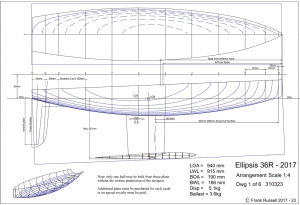
LOA: 938mm LWL: 915mm BOA: 190mm Disp: 5.1kg
PDF Plan emailed or Printed and posted on 6 A4 and A3 sheets
If you require another format: DXF, or DWG, 2D or 3D or printed paper plan, postage extra.
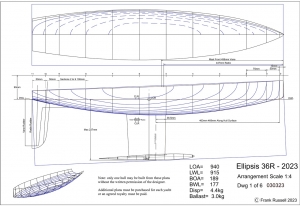
Ellipsis 36 2023 is a 36 inch restricted class designs based on the Ellipsis IOM design. The 36r design was a request from a UK skipper for a lighter version of the 2017 design for both Radio and vane sailing. This design shuld be more suitable for lighter wind smooth water venues than the 2017.
LOA: 938mm LWL: 915mm BOA: 189mm Disp: 4.4kg
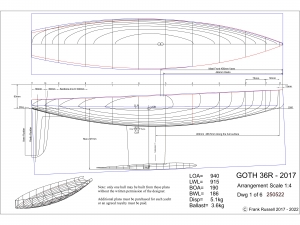
Goth 36 2017 is an 36 inch restricted class design based on the Goth IOM design. The original request came from John Fisher in 2013 who wanted a very light 36r for vane sailing. This design is the third design in the series, which has progressively become heavier and more successful.
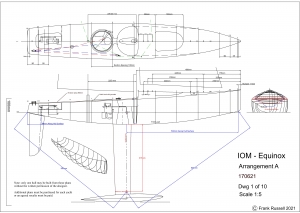
New Equinox IOM Plan : The Equinox is a variant of the Ellipsis… IOM. The basic design was produced initially as a 3D printed project that never eventuated for various reasons. Two prototypes were built including a 3D printed boat which was built by John Taylor in the UK. The design incorporates several features of some of the newer IOM shapes including a fuller higher bow profile and wider stern. The design is well balanced and well behaved like the Ellipsis and should be as easy to plank from wood.
Hulls an components for this design are now available. See IOM COMPONENTS Page.
After payment is made. I will email you the pdf file.
Please ask If you require another format: DXF, or DWG, 2D or 3D or printed paper plan, Postage extra.
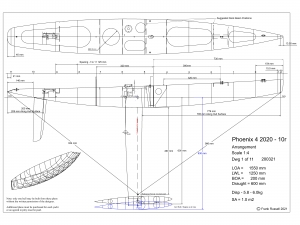
Phoenix 4 2020 10r Every new design presents a designer with options to consider and directions to go. After a ten year gap from the P3, all 10r’s had adopted the deep keel, light weight approach and although it did seem to work I after the P5 I though that the Phoenix 4 design although fast went in the wrong direction. I always have thought about what I should have done. So this is P4- 2020, with 2020 hindsight is the result.
LOA 1550mm LWL 1250mm BOA 200mm BWL 180mm, 4.2kg ballast on 600mm Draught and P1 to P3, Marblehead style sail plans on a flat deck.
She even drawn in the same software as the original.
After payment is made. I will email you the pdf file. Plan has A3, A4 sheets and a larger sheet with sections deasigned for laser cutting.
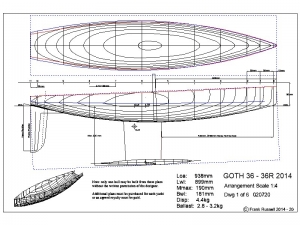
Goth 36 is an 36 inch restricted class design based on the Goth IOM design. The original request came from John Fisher in 2013 who wanted a very light 36r for vane sailing. this design is the second in the series, heavier and more successful. There is also a later 2017 version which will be published soon.
LOA: 938mm LWL: 899mm BOA: 190mm Disp: 4.4kg
If you require another format: DXF, or DWG, 2D or 3D or printed paper plan, just ask.
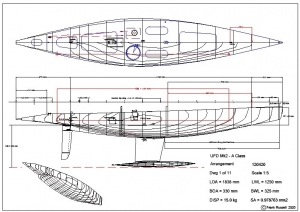
UFO Mk2 – A development of the successful UFO with a heavier displacement and larger sail plan. Improved aft sections with the chine removed.
LOA: 1838mmLWL: 1250mm Disp: 15kg SA: 0.978763 m2
PDF Plan emailed or Printed and posted on 12 A3 sheets
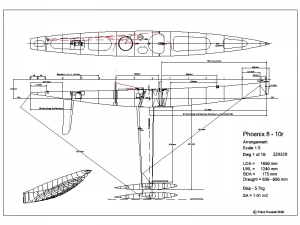
Phoenix 8 – 10r: The Phoenix MK 8 is a larger more powerful boat than the last three Phoenix Mks. The P8 is a return to the simple design, No chines, no raised fore deck and Marblehead rig profiles as used from P1 to P3. This allows simpler light weight construction and fully open soft decks and shared rigs if you have a Marblehead.
LOA: 1650 mm LWL: 1240mm, BOA: 170mm, Draught: 630 – 680mm, Disp 5.7kg, SA: 1.00 m2
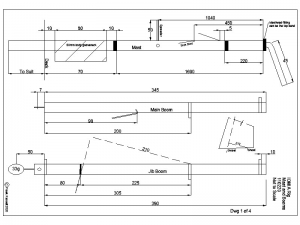
The Free updated IOM mast and boom schematic along with FRD IOM Setup Guide
FRD IOM Setup Guide Mast and Booms combined Feb 2020
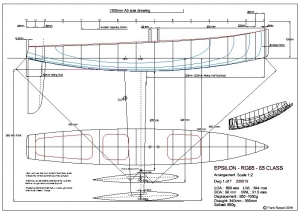
Epsilon RG65 – 65 2019: This design is based on the successful Ellipsis IOM concept, that of correct volume distribution rather than fashionable features with the emphasis on simplicity and efficiency.
Plans are PDF format or printed paper plan only. 3D hull and 2D bow and stern sections in DXF or DWG format are available on request.
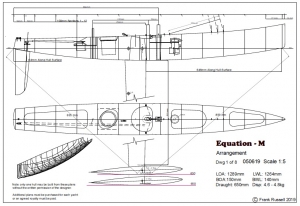
Equation Marblehead 2019: This design is based on the successful Ellipsis IOM concept, that of correct volume distribution rather than fashionable features with the emphasis on simplicity This design is the result of two Sailing Marblehead prototypes, The Ellipsis 1c and Ellipsis 2a.
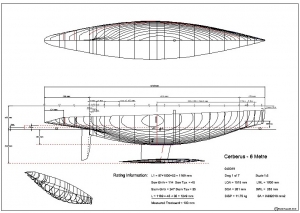
Cerberus – 6m Something more of a challenge from a designers and builder’s point of view. A class I have always admired. This is Ceberus, my first published Six Metre design. This is the result of several requests for a design in the class and also a desire on my part build a six Metre for fun sailing locally. There are a couple of boats that will be built in the UK to join the fleet there. This design is intended to excel in moderate winds and will outperform anything of similar size drought and displacement in Australian conditions. Plans are $30 pdf plans from my PLANS page with other formats available. This design may also be available for 3D printing at a later date.
LOA: 1515mm, LWL :1020mm, Displacement: 11.75kg, SA:0.682019m2
FREE PLANS:
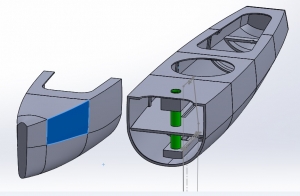
Goth XPRG RG65 for 3D printing: Deutsch Benoit has completed these drawings for the Goth XP RG and has kindly made them available for free download from this site. The file is a zipped file containing all the STL files.
Deutche’s Notes: I’m happy to share with you the 3D model in STL designed for small printers ( diam 13mm & 13 mm hight ) Only the bulb fin need to be printed in 2 half. Holes are performed to insert carbon stick. Hope You will enjoy it.
Be free to put it on you web site ( just insert my name ) if you are happy of my job ( and do not hesitate to revert if something wrong ).
Printer parameter are : filling 100% for all elements, Hull thickness 1.2mm, Support normally you don’t need. Just glue with cyano. The mast tube is 12mm outside and 10mm diam inside.
Goth XP RG Benoit update 01
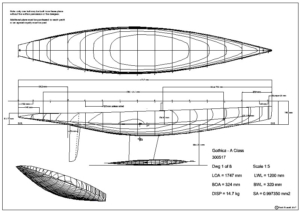
Gothica A class 2017 FREE Click HERE Gothica A class Plan to download the pdf
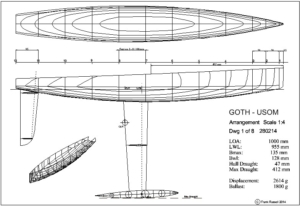
GOTH – USOM $FREE Click HERE: Goth-USOM to Download as pdf
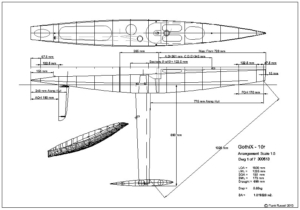
GothiX 10r – Ten Rater CLASS YACHT $FREE Click HERE: Gothix-10r to download as pdf
GothiX Youtube Video
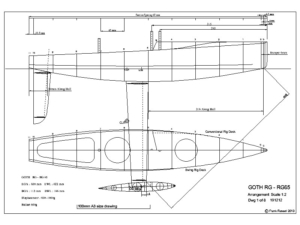
GOTH RG – RG65 CLASS YACHT $FREE Click HERE: Goth-RG to Download as pdf $FREE RG65-Sail-Plans
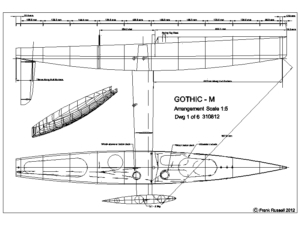
GOTHIC – M $FREE Click HERE: Gothic-M-Plan to Download as pdf
FREE Marblehead-Sail-Plans
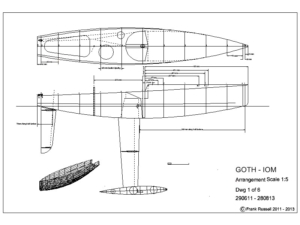
The home of the worlds best R/C Model Aircraft Designers
UK Manufactured to order: Guaranteed Quality

Products search
Login FAQ
[email protected] +44 (0)1684 311682
- Unorthodox Aircraft
- X-List Plans (Aircraft)
- F/F Sport & Competition
- C/L Aerobatic
- Round The Pole
- All Aircraft Plans not yet categorised
- All Short Kit (Sets)
- Scale Short Kit (Sets)
- Sport Short Kit (Sets)
- Depron Short Kit (Sets)
- All Laser Cut Wood Packs
- Scale Laser Cut Wood Packs
- Sport Laser Cut Wood Packs
- All Additional Wood Packs
- Scale Additional Wood Packs
- Sport Additional Wood Packs
- Private & Trainer aircraft
- Transport Aircraft
- WW1 Aircraft
- WW2 Aircraft
- Static Aircraft Wood Kits
- All Aircraft Parts
- ABS Sets & Fairing
- Cowls & Nacelles
- Intakes & Rads
- Spats & Undercarriage
- Spinners & Prop Nuts
- Cliff Charlesworth Cowls
- All Canopies & Screens
- Cliff Charlesworth Canopies
- Jilles Smits Canopies
- Pat Teakle Canopies
- Guns, Sights & Cockpits
- All Materials
- Depron Foam
- All Covering & Tools
- DiaCov 1000 Covering
- Lightweight Tissue
- All Perma-Grit Tools
- Sanding & Filing Tools
- Rotary Tools
- Cutting Tools
- Screwdrivers
- Hex Wrenches
- Clamps & Pliers
- Airbrushing
- Lighting & Magnification
- Marking & Measuring
- Covering Materials & Tools
- RTF Aircraft
- ARTF Aircraft
- Free Flight
- Books & Specials
- DVDs & Blu-Ray
- Bargain Aircraft DVDs SAVE!
- Full Size Focus CD
- Line Drawings
- Model Aircraft Magazine Plans
- Cabin Cruisers
- Coastal Forces
- Fishing Boats
- Paddle Steamers
- Leisure Craft
- Scale Traditional Craft - British Isles
- Merchant Vessels
- Scale Traditional Craft - Non British Isles
- Passenger Ferries
- Steam Designs
- Patrol Launch
- Rescue & Lifeboats
- Working Boats & Ships
- Traditional Craft - British Isles
- Traditional Craft - Non British Isles
- Racing Sailing Boats
- Sport Sailing Boats & Yachts
- Scale Sailing Boats & Yachts
- Competition Powerboats
- Competition Powerboats - IC
- Competition Powerboats - Electric
- Easy to Build Boats
- Engineering
- Hydroplanes
- X-List Plans (Boats)
- All other Boat Plans & not yet categorised
- All Plan & Hull Sets
- Sailing Plan & Hull Sets
- Motor Boat Plan & Hull Sets
- David Alderton Plan & Hull Sets
- All Boat Short Kit (Sets)
- Sailing Short Kit (Sets)
- Motor Boat Short Kit (Sets)
- All Boat Laser Cut Wood Packs
- Sailing Laser Cut Wood Packs
- Motor Laser Cut Wood Packs
- Sailing Additional Wood Packs
- Motor Additional Wood Packs
- All Boat Additional Wood Packs
- All Static Model Boats
- Narrow Static Boats
- Motor/Steam Static Boats
- Sailing Static Boats
- Working Static Boats
- RC Boat Kits
- Ready To Run Model Boats
- Boat Fittings
- Electronics (Boats)
- Hulls (FG & ABS)
- Plastic Materials & Parts
- Airbrushing (Boats)
- Rotary Tools (Boats)
- Internal Combustion Engines
- Steam Engines & Plant
- Workshop Equipment
- Model Railway Plans
- All Engineering Plans not yet categorised
- Military Vehicles
- Maintenance Trays
- Scale Model Boats
- Scale Model Buildings
- OO Gauge Parts & Kits
- O Gauge Parts & Kits
- HO Scale Parts
- White Metal Fittings
- Airbrushing (Engineering)
- Rotary Tools (Engineering)
- Engineering DVDs & Blu-Ray
- All Covering
- DiaCov 1000
- Sanding & Filing
- Aircraft Books & Specials
- Aircraft DVDs & Blu-Ray
- Bargain DVDs SAVE!
- Boat Books & Specials
- Boat DVDs & Blu-Ray
- Books & Specials
- Chargers & Leads
- Control Boards & Accessories
- Hot-end Parts/Kits
- Motors/Drivers
- Teeth, Wheels & Bearings
- VORON Parts
- Automotive Parts
- Crafts & Games
- Electric Scooters
- Medical / Health
- Shot Glass Trays

30 years Experience
Of Scratch Building & Modelling The Home of the Model Builder

Made in our Workshop
Laser Cut & Printed to Order Guaranteed Quality & Detail

Sailing Boats & Yachts
Showing 1–50 of 161 results

Varmint MM2129

Water Baby ‘A’ – Plan
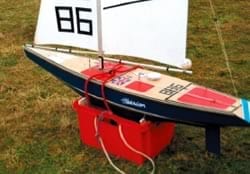
ABERDEEN PILOT BOAT NO. 2
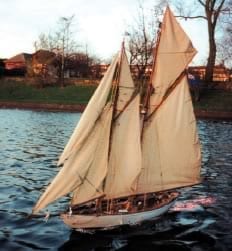
Ardent – Plan + Article
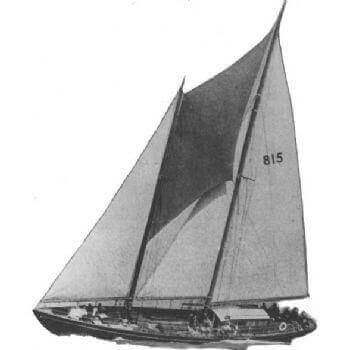
Argus MM405

Ariel MM746 Static Sail Plan
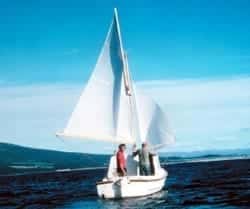
BALLAST PROFILES
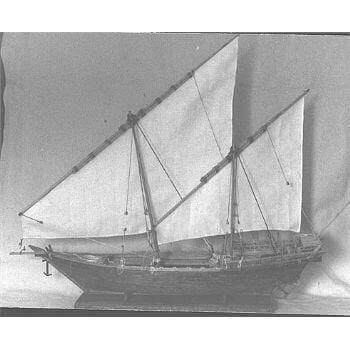

Banoosh MM1353 Static Sail Plan

Barge Yacht MM902 Static Sail Plan
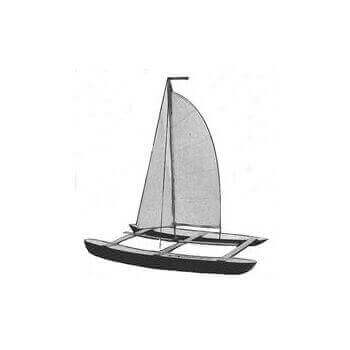
Birkenhead Catamaran MM1121
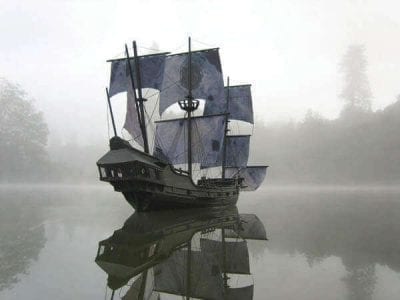
Bluebottle MM293
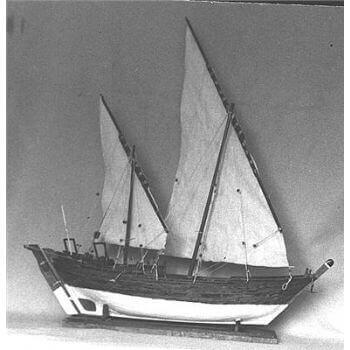
Boom Safar MM1327 Static Sail Plan
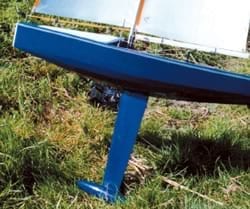
BRAINE AND VANE STEERING
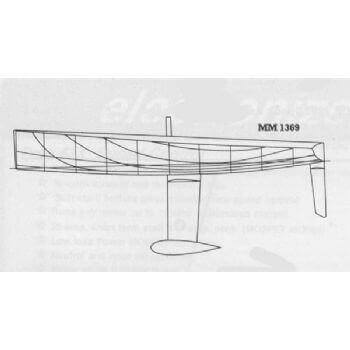
Breakaway MM1369

Breeze (Bristol Channel Pilot Cutter) – By Dave Alderton

Brig SY34 Static Sail Plan

Brigantine SY33 Static Sail Plan

‘Hilda 2’ (Bristol Channel Pilot Cutter) – By David Alderton
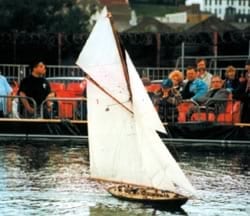
Britannia – The Kings Racing Cutter – Plan
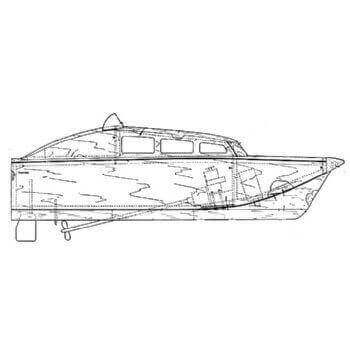
Buoy Cat MM728

Burutu & Bajima Tug
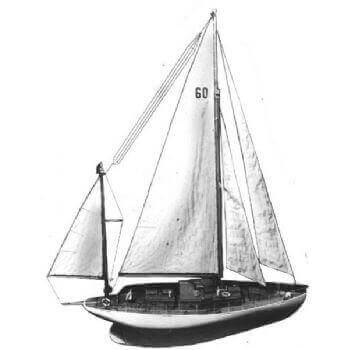
Caribee MM403

Celia Jane MM1365

“Gypsy Queen” Yarmouth Lugger

Galway Hooker – by Mike Mayhew of Waverley Models

China Boy MM501

Nookie Bear – Radio 10 Rater – Plan

Wing Ray – Plan by Vic Smeed

Comet Catamaran Plan MM1139

Crackerbox – Plan
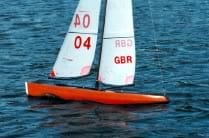
Cumulus (Marblehead) – Plan & Article

Cutter Rig SY29 Static Sail Plan

Cygnette MM762

Dabchick – Plan
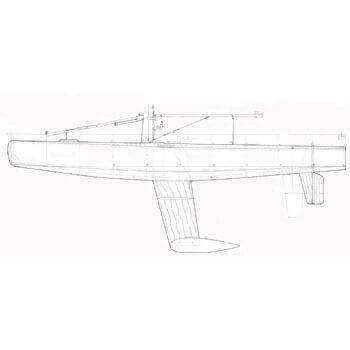
Dinghy MM153 Static Sail Plan
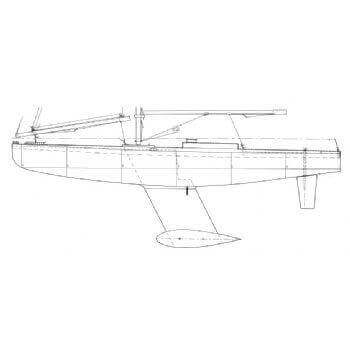
Duckling RC1344
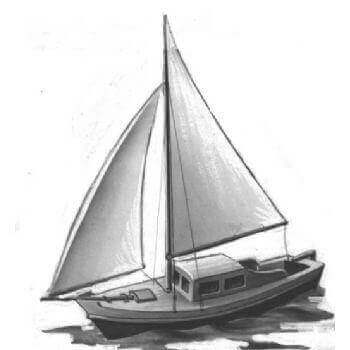
Dutch Auxiliary MM240

Dutch Yacht MM1203 Static Sail Plan
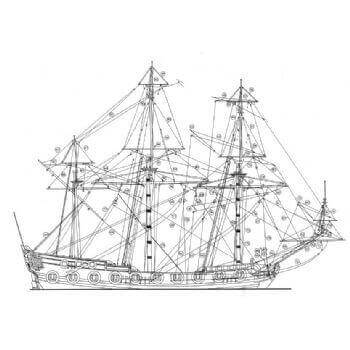
Early Sixth Rate SY24 Static Sail Plan
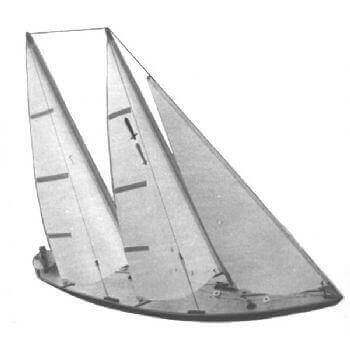
Eowyn Of Rohan MM1181
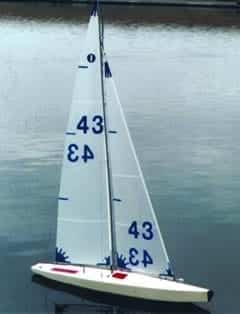
- Patrol Launch (8)
- Scale Traditional Craft - British Isles (7)
- Scale Traditional Craft - Non British Isles (4)
- Cabin Cruisers (27)
- Coastal Forces (79)
- Fishing Boats (25)
- Leisure Craft (47)
- Rescue & Lifeboats (23)
- Merchant Vessels (51)
- Steam Designs (22)
- Passenger Ferries (11)
- Trawlers (40)
- Tug Boats (85)
- Warships (128)
- Paddle Steamers (13)
- Working Boats & Ships (144)
- Traditional Craft - British Isles (13)
- Traditional Craft - Non British Isles (7)
- Warship (4)
- Racing Sailing Boats (26)
- Scale Sailing Boats & Yachts (72)
- Sport Sailing Boats & Yachts (27)
- Easy to Build Boats (11)
- Engineering (21)
- Competition Powerboats (7)
- Competition Powerboats - Electric (7)
- Competition Powerboats - IC (9)
- Hovercraft (11)
- Hydroplanes - Electric (7)
- Hydroplanes - IC (7)
- Straight Runners (2)
- Submarines - Scale (18)
- Submarines - Sport (3)
- Unconventional Boats (15)
- X-List Plans (Boats) (21)
- All Boat Plans not yet categorised (155)
Filter by price
Average rating.
- Rated 5 out of 5 (2)
- Rated 4 out of 5 (1)

The global authority in superyachting
- NEWSLETTERS
- Yachts Home
- The Superyacht Directory
- Yacht Reports
- Brokerage News
- The largest yachts in the world
- The Register
- Yacht Advice
- Yacht Design
- 12m to 24m yachts
- Monaco Yacht Show
- Builder Directory
- Designer Directory
- Interior Design Directory
- Naval Architect Directory
- Yachts for sale home
- Motor yachts
- Sailing yachts
- Explorer yachts
- Classic yachts
- Sale Broker Directory
- Charter Home
- Yachts for Charter
- Charter Destinations
- Charter Broker Directory
- Destinations Home
- Mediterranean
- South Pacific
- Rest of the World
- Boat Life Home
- Owners' Experiences
- Interiors Suppliers
- Owners' Club
- Captains' Club
- BOAT Showcase
- Boat Presents
- Events Home
- World Superyacht Awards
- Superyacht Design Festival
- Design and Innovation Awards
- Young Designer of the Year Award
- Artistry and Craft Awards
- Explorer Yachts Summit
- Ocean Talks
- The Ocean Awards
- BOAT Connect
- Between the bays
- Golf Invitational
- Boat Pro Home
- Pricing Plan
- Superyacht Insight
- Product Features
- Premium Content
- Testimonials
- Global Order Book
- Tenders & Equipment

Svea: Inside the newest member of the J Class fleet
Silhouetted against the Mediterranean sunset, Svea ’s overhangs are awesome to the point of outrageousness. Her original profile was based on an analysis of the development of the J Class after the 1936 match racing series.
The Swedish naval architect and boatbuilder Tore Holm, famous for his Six Metre and Eight Metre class racing yachts, had turned his pencil to the far bigger Js and he set out to design to the longest LOA the class would allow. He had completed his yacht’s lines and sailplan in 1937 just before the Second World War changed the world’s priorities and, with it, sailing and the great and glorious international regattas, including the America’s Cup . Europe would take decades to recover economically and when it did the J Class seemed a little anachronistic.
Holm himself was a proud Olympic sailor from a boatbuilding family in Gamleby, Sweden. So it would not be a stretch to imagine him designing a yacht for Sweden’s elite to take on Europe’s best. Even though he continued designing boats into the 1950s, mostly Skerry cruisers and international classes, his J Class plans remained in a drawer.
J-S1 probably would have remained a ghost except for a trio of coincidences. The first was when the secretary of the International Eight Metre class, John Lammerts van Bueren, received permission from Holm’s heirs to comb through his drawings for plans of un-built Metre classes. In the attic of the family home, he came across the unmistakable plans of a J Class signed by Holm in 1937.
The second coincidence was that Lammerts van Bueren was good friends with Dutch naval architect Andre Hoek. Hoek was fascinated by the discovery and assembled a group, including a potential owner, to buy the rights to the design.
“We could see that there was a growing interest in the J Class,” says Hoek. His firm Hoek Design Naval Architects had earlier been hired to analyse the 1936 designs Sparkman & Stephens and Starling Burgess made for the replacement of Harold Vanderbilt’s 1930 Cup winner Enterprise , an exercise that led to the building of the original Ranger . Hoek’s task in 2005 was to find a design that could be updated to the modern class rules. This became Lionheart , which was launched in 2010.
“The discovery of the Holm J was exciting,” says Hoek. “We had developed a velocity prediction program specifically to analyse the lines and sailplans of classic displacement sailing yachts with long keels and attached rudders. We ran the lines of every known J through the program. We took the five designs that seemed to perform the best and subjected them to computational fluid dynamics to simulate tank and wind tunnel testing; then the data really got interesting! The Holm boat indicated it would be a very powerful performer.”
His team set about modernising the design to the new class rules. Construction started and with the two halves of the hull and deck completed, the owner pulled out, leaving the builder, Claasen Shipyards , with the unfinished hull and Hoek in search of another potential owner.
Enter coincidence number three — an avid racer who wanted to be able to sail in the America’s Cup Superyacht Regatta and J Class Regatta in Bermuda last year. The owner’s fleet manager picks up the tale. “He saw five Js racing at the Superyacht Cup and that was pretty impressive and twice we were involved in regattas where Js were competing. He sailed Endeavour and had chartered Rainbow for the Cowes Centennial, but then that boat sold,” he explains, adding that his boss also had the opportunity to sail Lionheart and Hanuman .
When he learned of the opportunity to buy the hull and deck of the Swedish design from Claasen, the owner took it, realising that that was the only way he would be able to make the event in Bermuda on his own boat. And so began the programme to finish a J Class from a bare hull in just 14 months. The build was completed at Vitters , which had arranged a partnership with Claasen.
Tako van Ineveld, formerly a director at Holland Jachtbouw , had been involved with the build and sailing of Rainbow . Now heading his own independent project management company, he was the perfect choice to direct the build of Svea as the owner’s representative. First on the list of modifications for the new owner was the addition of a doghouse and a revision of the deck layout.
Originally the wheel was mounted on deck like Endeavour ’s and there was no cockpit, notes Hoek. “But it is such a big wheel that it’s hard to put a lot of pressure on it unless you are on the centreline, but at times you really need to see what’s happening on the lee side. We felt it would be better to create a shallow cockpit and recess the bottom of the wheel in a well to give the helmsman a better position.” Unlike many of the details of the J Class, the layout and dimensions of the cockpit and the position of the wheel and winches are not part of the regulations.
Svea ’s cockpit is one of the standout features. Hoek and the owner’s team revised the plan, essentially splitting the sailing functions into two cockpits. The afterguard — helmsman, tactician, main and jib sheet trimmers and the team on the running backstays — are in constant visual communication and within easy hearing distance of each other while the halyard and spinnaker trimming winches and their crew are forward of the doghouse.
It’s an inspired set-up for fast, quiet communication, says Vittorio Papa of the Hoek Design office, noting there are no winches behind the helmsman. When in cruising mode, a U-shaped framework clips in around the edge of the cockpit to provide comfortable seating for 10 around a gleaming teak table.
“The owner has an experienced racing team and they took the lead in working with Southern Spars, Harken and North Sails in concert with the engineers for the yard,” said van Ineveld. “From a sail handling point of view, she is likely to be the most aggressive J yet.”
The owner wanted an interior with an owner’s suite plus two en suite guest cabins, a comfortable combination saloon and appropriate quarters for six permanent crewmembers. He chose Pieter Beeldsnijder to draw an interior that would nod to the classics, but not become a costume drama. For example, the joinery is open grain matt-varnished walnut and the simplified raised panels are off-white. Hardware is a tasteful gunmetal that complements the carbon fibre spars and sails and the deep grey pearl of the topsides.
One of the more modern interior features of Svea is a drop-down wall panel between the galley and saloon that creates an informal breakfast bar. While the cabinetry looks rich, 80 per cent of the interior is veneered foam core to save weight. The added teak doghouse is carbon fibre with teak veneer.
Sadly, in the middle of the project Beeldsnijder passed away. While Hoek Design transferred his hand-drawn sketches to AutoCAD details, Michiel de Vos of deVosdeVries Design was brought in to complete details for interior manufacturer List and choose soft goods with the owner.
In the small town way in which everything in maritime Holland seems just a few degrees of separation apart, de Vos formerly worked with Beeldsnijder before starting his own firm and earlier sailed as second engineer on the J Class yacht Shamrock V .
First and foremost, Svea is a racing yacht and the owner is committed to providing everything to work towards victory, says Captain Paul Kelly, a veteran of the classic schooners Borkumriff IV , Atlantic and Eleanora . Part of that commitment was assembling his 2017 race crew to sail on the boat in sea trials in Holland and then to assemble for full-on practice throughout April in Palma.
“We have the benefit of 20 years of development on Ranger and five or six on Lionheart ,” notes Kelly. “I think we are in a better position right out of the packet. Of course, they have the years of practice but our 28 crew have really settled into their roles.” All of the permanent crew also race.
“ Svea is an absolutely incredible fusion of 1937 design and 2017 technology,” says Kelly. “We look like 1937 but strip away the veneer and we are as modern as they come.” Contrasting the J with his previous charges he is quick to note “this one is a lot easier to drive”.
Moder Svea, which translates from Old Norse as “Mother Sweden”, has been the patriotic symbol of the country since the mid-1600s. Usually depicted as a powerful female warrior, Svea seems the perfect name for the yacht that carried her country’s seafaring heritage onto the world stage when the Js did battle during an America’s Cup for the first time since 1937.
First published in the June 2017 edition of Boat International .
More about this yacht
Similar yachts for sale, more stories, most recent, from our partners, sponsored listings.
Lionheart, JH1
Original lines: Burgess/Stephens / Modified lines: Hoek Design & Naval Architects
Image Credit:
Image Credit:

Lionheart is the first modern replica J Class to be built in aluminium and was launched in July 2010. The original owner who commissioned JH1 was a repeat client of Andre Hoek who had then simply sought to build the fastest J Class yet.
Hoek developed their own VPP (velocity prediction program) software to analyse all the existing J Class designs before CFD and traditional tank testing with 6 metre long models. Hoek identified the J Class Ranger as outstanding from a family of seven Burgess and Stephens designs which were originally submitted to Harold Vanderbilt in 1936, and it was this design that was used for Lionheart.
The design showed exceptional promise as a very good all-rounder, fast on all points of sail in light, medium and heavy winds. Designed at 43.4m she was to be the longest on the waterline at the time.
In terms of deck and rig hardware, Lionheart fully utilised modern superyacht and grand prix race yacht technology where appropriate, significantly moving forwards J Class construction and specification using the most powerful winches and hydraulic systems available to optimise sail handling and trimming, keep all up weight down and to deal with the high rig loads.
Lionheart is the first J Class to have adopted a double cockpit layout with a private owners’ cockpit and deckhouse aft of the wheel and, forward of the wheel, a large guest cockpit leading to the main companionway and deckhouse. This allows the working area of the boat to be separated from the guests, improves communications between the afterguard and allows more of the working crew to work inside a cockpit rather than on the deck.
True to that original promise, Lionheart has been the standout performer on the race course since she was launched. From 2014 when they won in Menorca, Palma and Sardinia until 2017 when she won the seven boat J Class Superyacht Regatta and the J Class America’s Cup in Bermuda, followed by the inaugural J Class World Championship in Newport RI.
Then under the guidance of tactician Bouwe Bekking, the Lionheart project evolved to the highest level thanks to their desire to improve as a team. Each regatta saw Lionheart make comprehensive daily briefings and debriefings, they optimised their performance package and trained hard as a team. And over the years the owner became one of the most accomplished, competitive helms in the fleet. Bekking retained key core crew from the Brunel round the world race programme he skippered.
Lionheart has cruised extensively since 2017 and was expected to return to the race course in 2023 before their plans were put on hold.
Length at waterline
displacement
upwind sail area
spinnaker sail area

2013 Saint Barths Bucket
Lionheart 2nd
2013 Superyacht Cup Palma
2013 les voiles de saint-tropez.
Lionheart 3rd
2014 Menorca Maxi
Lionheart wins
2014 Superyacht Cup Palma
2014 maxi yacht rolex cup, 2015 j class falmouth regatta, 2015 rys bicentenary regatta cowes, 2016 maxi yacht rolex cup.
Lionheart wins on countback with Velsheda
2016 Les Voiles de Saint Tropez
2017 saint barths bucket, 2017 america’s cup superyacht regatta, bermuda, 2017 j class america’s cup regatta, 2017 j class world championships, newport.

This site uses cookies to enhance your experience. By continuing to browse the site, you consent to the use of cookies. View our Privacy Policy for more information.
Elektrostal, Moscow Oblast, Russia
Anniversary pond.

- Aviazapchast PLC Representative Offices
- Licenses and Certifications
- Quality Management
- International partners
- Partner companies

IMAGES
VIDEO
COMMENTS
This is a quick overview of the building process that is needed to build a model J boat. Below is a list of most of the materials that were used. WOOD. 2 - 1"x8"x8' pine, aspen, bass or other suitable wood that can be cut into 5/32"x3/8" strips for hull and deck planking.
The class of this boat is known as Vintage Marblehead (VM) and is still actively sailed today under the guidance of the U.S. Vintage Model Yacht Group. The Marblehead class of small boat originated in 1932 using minimal design requirements of 50″ LOA and 800 square inches of sail. When fully rigged the boat is over 7′ tall, which makes it ...
J Boat. J Class. The J Class models are 1/16th scale hulls of the J Class yachts that sailed for the America´s Cup from 1930 through 1937 as well as the yachts that were converted to the J Class and competed with the America´s Cup yachts in club regattas. The models are the largest recognized class in the AMYA with hull lengths ranging from ...
Designs / Plans. The WoodenBoat Forum is sponsored by WoodenBoat Publications, publisher of WoodenBoat magazine. The Forum is a free service, and much like the "free" content on Public Radio, we hope you will support WoodenBoat by subscribing to this fabulous magazine. To get WoodenBoat delivered to your door or computer, mobile device of ...
Endeavour demi-coque 43, 53, 63, 87, 100, 120 cm sans plateau par L'Herminette. Inconnu. MM-07 ENDEAVOUR 1934 HALF HULL by Abordage. Inconnu. HM-PM-07 ENDEAVOUR I - 1934 FRAMED HALF MODEL by Abordage. Inconnu. Half Hull Endeavour red 80cm. Inconnu. A model of the 1934 America's Cup challenger Endeavour.
Ranger is a 41.55 metre replica of the J Class yacht of the same name, which was built for the 1937 America's Cup by a syndicate led by railroad heir Harold Vanderbilt. Starling Burgess and Olin Stephens had been asked to produce eight sets of lines and the one selected as most suitable for the conditions expected off Newport, Rhode Island — design number 77C — was one of Burgess ...
The J Class. J Class yachts were originally built to the specifications of the Universal Rule. The J Class really represents the golden age of racing for the America's Cup in the 1930s when this Universal Rule was used as the determining measurement system. J Class yachts were originally built to the specifications of the Universal Rule.
This fits on the deck but is secured to the ballast to avoid stressing the deck when used. Also on this site is the new International Dragon, a logical extension to the model range and a development of the 60-inch hull. This model contains a number of innovations to model yachting and is designed from outset to carry a Genoa rig.
The J Class emerged in 1930 and marked a quantum leap in yachting technology, but comprised a hotchpotch of design altered over many years. The J Class - so named because it was the letter ...
pond yacht in sailboats, we have the Crosby cat, the Marshall 18, and Beetle cats, two different sizes of the Schooner Bluenose, the NEW Gertrude L. Thebaud, a Friendship sloop, Schooners Adventuress, America, Amistad, the much admired Herreshoff's 12.5 "S" boats, and New York 30, the J Class Rainbow, Endeavour, Enterprise,
J Class yacht Velsheda sailplan. LOA: 39.25m/128ft 9in · LWL: 27.8m/91ft 3in · Beam: 6.57m/21ft 7in · Disp: 180 tonnes. Original lines: Charles E Nicholson. Modified design: Dykstra Naval ...
Plans for the unbuilt J9, from a Frank Paine design of 1936, have been developed by Hoek Design and the project is ready to go straight into construction. As the J Class gears up for a showcase regatta that will form part of the 35th America's Cup in Bermuda in 2017, the fleet is growing.
Classic Pond Yachts. Restoration and information. Classic Pond Yachts. ... 1939 Kittywake design Marblehead. Half Marblehead. Pocahontas Marblehead. ... Deck lining tool. 5 Tonner 'Laura' 'Dolly' a nice boat! 1928 Molly an 18 foot rule boat. 'A' Class yacht 'Cymbeline' Stan Witty designed 'Wasp' Marblehead. Daniels Onward replica. 'Lady Betty ...
The P8 is a return to the simple design, No chines, no raised fore deck and Marblehead rig profiles as used from P1 to P3. This allows simpler light weight construction and fully open soft decks and shared rigs if you have a Marblehead. LOA: 1650 mm LWL: 1240mm, BOA: 170mm, Draught: 630 - 680mm, Disp 5.7kg, SA: 1.00 m2.
Britannia - The Kings Racing Cutter - Plan. SKU: MAR2530. The classic Royal racing yacht built in 1893 and scrapped in 1937. Drawn at 1:32nd scale, 1160mm length and 226mm... £ 33.00 Add to basket.
Svea is based on a 1937 design by Tore Holm. His team set about modernising the design to the new class rules. Construction started and with the two halves of the hull and deck completed, the owner pulled out, leaving the builder, Claasen Shipyards, with the unfinished hull and Hoek in search of another potential owner.
Lionheart is the first modern replica J Class to be built in aluminium and was launched in July 2010. The original owner who commissioned JH1 was a repeat client of Andre Hoek who had then simply sought to build the fastest J Class yet. ... The design showed exceptional promise as a very good all-rounder, fast on all points of sail in light ...
J Class yachts Velsheda, Topaz and Svea downwind legs. The J Class is one of several classes deriving from the Universal Rule for racing boats. The rule was established in 1903 and rates double-masted racers (classes A through H) and single-masted racers (classes I through S). From 1914 to 1937, the rule was used to determine eligibility for ...
J Class Style Pond Yacht - Rescued from the skip and given a new lease of life to sail again as "Rudder only" radio controlled.
Archive for the 'PLANS AND PLACES' Category. 10 Feb. Cirque du Soleil in Moscow. Posted by Rosinka Moscow in PLANS AND PLACES. Leave a comment. The Dralion show of the Cirque du Soleil will come to Moscow beginning March 6 at the Luzhniki Palace of Sports. For more information and tickets, visit the website:
Get directions to Yuzhny prospekt, 6к1 and view details like the building's postal code, description, photos, and reviews on each business in the building
Anniversary pond is a 1.3 mile (3,000-step) route located near Elektrostal, Moscow Oblast, Russia. This route has an elevation gain of about 0 ft and is rated as easy. Find the best walking trails near you in Pacer App. Open in App for Details. Recommended Routes. Elektrostal, Moscow Oblast, Russia.
3. 360 Aircraft Repair Plant, Joint-Stock Company (360 ARP JSC) Ryazan. 4. 419 Aircraft Repair Plant, Joint-Stock Company (419 ARP JSC) Saint-Petersburg. 5. 99 Aviation Technological Equipment Plant, Joint-Stock Company (99 ZATO JSC) Moscow.